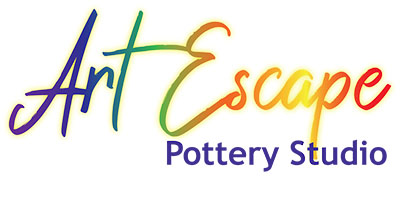Strengthen Your Core with Pottery: The Role of Posture and Guidance from a Skilled Teacher
Pottery isn’t just an art form—it’s also a surprisingly effective way to strengthen your core muscles and improve your posture. From the repetitive movements of wedging and centering clay to the precise control required for throwing on the wheel, pottery engages a variety of muscle groups, including those in your core. In this article, we’ll explore how pottery can benefit your core strength, the importance of posture in pottery practice, and how a skilled pottery teacher can help you maximize these benefits.
Core Strength and Pottery: Your core muscles play a crucial role in stabilizing your body and supporting your spine during pottery activities. Whether you’re wedging clay, centering it on the wheel, or shaping it into a vessel, your core muscles are engaged to maintain proper alignment and control your movements. Over time, the repetitive nature of pottery practice can help strengthen these muscles, leading to improved core stability and overall strength.
Importance of Posture: Good posture is essential for effective and efficient pottery practice. Proper alignment of the spine, pelvis, and shoulders not only reduces the risk of injury but also allows you to exert more control over the clay. Maintaining a tall, upright posture while working at the wheel or hand-building helps distribute the workload evenly across your muscles and minimizes strain on your joints. Additionally, good posture promotes better breathing and circulation, enhancing your overall well-being.
How Pottery Improves Core Strength: Pottery requires a combination of stability, balance, and coordination, all of which rely on strong core muscles. As you engage in pottery activities, such as wedging, centering, and throwing, your core muscles are constantly activated to support your movements and maintain your balance. Over time, this repetitive engagement helps strengthen your core, leading to increased muscle tone, endurance, and stability.
Role of a Skilled Pottery Teacher: A skilled pottery teacher plays a crucial role in helping you develop proper posture and maximize the benefits of pottery for your core strength. Through personalized instruction and hands-on guidance, a teacher can assess your posture, identify areas of weakness or imbalance, and offer specific exercises and adjustments to improve your alignment and technique. Additionally, a teacher can provide feedback and encouragement to help you progress safely and effectively in your pottery practice.
Tips for Maintaining Good Posture in Pottery Practice:
- Align your spine: Sit or stand tall with your shoulders relaxed and your spine elongated.
- Engage your core: Keep your abdominal muscles gently activated to support your spine and stabilize your movements.
- Distribute your weight evenly: Whether sitting at the wheel or standing at the workbench, distribute your weight evenly between both sides of your body.
- Relax your shoulders: Avoid hunching or tensing your shoulders; instead, allow them to remain relaxed and down away from your ears.
- Take breaks: Remember to take regular breaks to stretch and reset your posture, especially during long pottery sessions.
In conclusion, pottery is not only a creative and fulfilling hobby but also a beneficial way to improve your core strength and posture. By engaging in pottery activities under the guidance of a skilled teacher and maintaining proper alignment and technique, you can strengthen your core muscles, enhance your stability and balance, and enjoy the many physical and mental benefits of pottery practice. So, the next time you sit down at the wheel or pick up a slab of clay, remember to engage your core and enjoy the transformative power of pottery.

